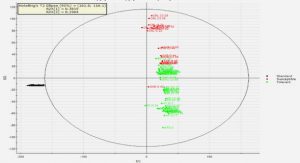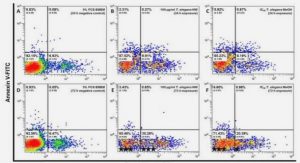Get Complete Project Material File(s) Now! »
WATER MANAGEMENT IN SOUTHERN AFRICA: RESPONSE THEATRE IN
PROGRESS Southern Africa is characterized by high climatic variability, an uneven spatial and temporal distribution of runoff, and a history of attempts, with varying success, to compensate for an unpredictable water supply. Water issues in this region are now being cast in a new light, illuminating the essential challenge to balance the preservation of ecological integrity and the achievement of social and economic development objectives. Several countries are reforming their water law, and are increasingly decentralizing management or forming new institutions, often across national boundaries. This shift has not been universal, however, and waterrelated problems are expected to persist in some areas, especially where competition for water is fierce and institutions are weak. The result is a temporal and spatial mosaic of water management systems that presents a unique case for evaluating responses across various temporal and spatial scales and socio-economic conditions.
Scenarios in the Millennium Ecosystem Assessment
The Millennium Ecosystem Assessment was a 4-year program launched in 2001 to meet the needs of decision makers for scientific information about the relationships between ecosystem change and human well-being (MA 2003). In addition to a global analysis, it included 33 subglobal assessments, ranging in size from village to sub-continent, to provide a more detailed picture of ecosystem services and human well-being, build capacity to conduct ecosystem assessments, and strengthen user involvement across the globe. Guided by a userdriven process, it sought to engage ecosystem users and managers and to incorporate their knowledge and perceptions into the assessment. The global assessment served three international environmental conventions, national governments, and the private sector, whereas subglobal assessments addressed the concerns of specific user advisory groups.
Scenarios formed a major component of the Millennium Assessment’s work. We define scenarios as a set of plausible narratives that depict alternative pathways to the future. Scenario planning is the creation and use of such scenarios in a structured way to stimulate thinking and evaluate assumptions about future events or trends, and to make uncertainties about these explicit. It is important to make a distinction between scenarios in this sense and projections, forecasts, and predictions, all of which relate more to the probability than possibility of future outcomes (Peterson et al. 2003). Projections and forecasts – which typically place an estimate on the likelihood of an event’s occurrence – work best for shortterm forecasting in well-understood systems (Bennett et al. 2003). This is an appropriate way to deal with uncertainty when the objective is risk management, which requires at least an intuitive probability to be placed on the occurrence of a rare event, such as a space shuttle accident (Seife 2003). Ecosystem services and human well-being, on the other hand, are part of social-ecological systems, in which unexpected outcomes are common (Gunderson & Holling 2002).
Building Southern African Scenarios: the Gariep Basin Experience
The Gariep River basin The Gariep River basin (665,000 km 2 ), which we define as the area of South Africa and Lesotho drained by the Senqu-Gariep-Vaal river system, contains one of the greatest concentrations of wealth on the African continent, Gauteng Province (the JohannesburgPretoria metropolitan area). The basin is a region in transition, owing in large part to South Africa’s shift to democratic governance in 1994. This political change was a catalyst for accelerating economic growth, redressing inequitable access to resources under the former Apartheid regime, promoting human well-being, and passing progressive legislation on biodiversity, the environment, and water. Current policy trends in the region such as decentralization, multinational resource management, and the establishment of pan-African initiatives such as the New Partnership for Africa’s Development all have far-reaching implications for ecosystem services.
The Gariep is the most modified river basin in Southern Africa, with massive undertakings such as the Lesotho Highlands Water Project, the largest transfer scheme in African history, University of Pretoria etd, Bohensky E L (2006) 3. Future Ecosystem Services 51 impounding and diverting water to serve the Gariep River’s competing uses: irrigation of its agricultural heartland, urban and industrial demands, and people and ecosystems. The basin encompasses South Africa’s major cereal production area, the bulk of its mining and coal industries, and two international biodiversity hotspots (Succulent Karoo and MaputalandPondoland-Albany). The Gariep basin is home to nearly 40% of the South African population and all of Lesotho’s, who range from destitute rural communities that are tightly bound to ecosystem services to highly developed industrialized societies. The Gariep basin assessment was conducted by a team of scientists with guidance from a user advisory group, consisting of policy makers from agriculture, water, tourism, and conservation departments of national and provincial government, and researchers working on environmental or conservation policy issues. The team and group met five times over two years, initially to discuss the assessment objectives, design, and expected outcomes, and proceeding to tackle increasingly complex issues of trade-offs, scenarios, and interventions. Between workshops, the assessment team undertook more extensive analysis of the focal issues identified with the group, with whom it communicated regularly.
The WaterScape: An agent-based water management model
Agent-based models investigate dynamics that emerge in complex systems from the interaction of agents, an environment, and rules. Agent-based modeling has been used to explore emergent system dynamics that emanate from decisions made by individual actors (Epstein and Axtell 1996, Goldstone and Janssen 2005), issues of control, communication, and coordination in ecosystem management (Bousquet and Le Page 2004), and sustainability and resilience over the broad scales of time and space at which social-ecological dynamics occur (Janssen and Carpenter 1999, Erasmus et al. 2002, Carpenter and Brock 2004). Several agent-based models have been used to explore aspects of water management (Lansing and Kremer 1993, Barreteau et al. 2003, Becu et al. 2003), including the new policy environment in South Africa and trade-offs between socio-economic options in particular catchments (Farolfi et al. 2004). The model described in this paper differs from previous efforts in the region in its broader spatial and temporal extent, which I suggest is fundamental to understanding the decentralisation process. Furthermore, this model adopts a unique socialUniversity of Pretoria etd, Bohensky E L (2006) 4. Decentralisation and its discontents 74 ecological perspective on the South African water management transition that incorporates alternative management paradigms and the role of learning.
I used the CORMAS (Common-pool Resources and Multiagent Systems) simulation platform (Bousquet et al. 1998) to develop the WaterScape, an agent-based model of human responses for managing water in a simulated environment that approximates the hydrological landscape of South Africa (A class diagram and description of the model entities are included in Appendix B and C; the full model code is available upon request from the author at erin@sun.ac.za). Alternative scenarios define distinct agent world views about the use of water and strategies that correspond to these world views. Collectively, agents must fulfill both short-term needs for water, such as daily domestic use, livelihoods, and economic growth, and long-term needs, such as the continued delivery of ecosystem services. They must also balance fine-scale and broad-scale water interests, within the constraints of the environment and overarching rules that govern agent behavior, described below.
Role of Learning
The ability to learn enables agents to search for a water management approach that satisfies their demands for water given their particular environmental constraints. Under both learning algorithms, scenario selection is patchily distributed, but Hydraulic Mission is clearly dominant at the end of the simulation under Learning by Maximum Allocation, while the majority of WMAs select Efficiency First at the end of the 100-year period (Figure 4.6). Comparing these maps to those of the achievement of the three Water Act principles, it becomes clear why water use is more sustainable under Learning by Maximum Allocation than under any other scenario. Consider that CMAs can intervene in the water supply under Hydraulic Mission by negotiating water transfers from surplus to deficit WMAs, and moving all of the donor catchments’ available water between any two points on the WaterScape. As water becomes increasingly scarce, this is probably the most aggressive way to access more, and more available water relative to demand decreases the withdrawal-to-availability ratio and hence transformation (despite the numerous risks associated with water transfers, which the model ignores). Meanwhile, the success threshold (satisfaction of 75% or more of demand) becomes increasingly difficult to meet, and agents who are unable to reap the merits of Hydraulic Mission switch scenarios with increasing frequency as they search for the most.
Table of Contents :
- Abstract
- Declaration
- Disclaimer
- Acknowledgements
- Contents
- List of Figures
- List of Tables
- Chapter 1. Introduction
- Chapter 2. Evaluating responses in complex adaptive systems: Insights on water management from the Southern African Millennium Ecosystem Assessment (SAfMA)
- Chapter 3. Future ecosystem services in a Southern African river basin: A scenario planning approach to uncertainty
- Chapter 4. Decentralisation and its discontents: redefining winners and losers on the South African ‘waterscape’
- Chapter 5. Learning dilemmas in a social-ecological system: an agent-based modelling exploration
- Chapter 6. Discovering resilient pathways for water management: two frameworks and a vision
- Chapter 7. Synthesis
- Appendix A. Background paper on Southern African Millennium Ecosystem Assessment by van Jaarsveld et al. (2005)
- Appendix B. Class diagram depicting agent classes of the WaterScape model
- Appendix C. Description of attributes of entities in the WaterScape model
- Appendix D. Translation of scenarios for use in WaterScape model
GET THE COMPLETE PROJECT
A SOCIAL-ECOLOGICAL SYSTEMS PERSPECTIVE ON WATER MANAGEMENT IN SOUTH AFRICA






